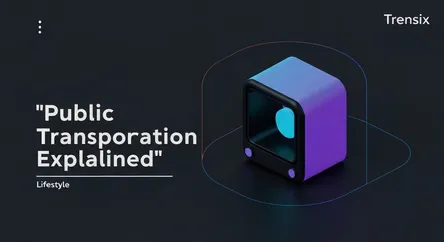Lifestyle
Public Transportation Explained

Discover public transportation, the shared transit systems shaping urban travel. Learn why it's trending for its sustainability and affordability.
What is it?
Public transportation, also known as public or mass transit, encompasses shared passenger transport services available for general public use. Unlike private transport like cars, these systems typically operate on scheduled routes for a set fee. Common forms include city buses, trams (or streetcars), light rail, subways, and commuter trains. The primary goal is to provide an affordable and efficient mobility option for large numbers of people within urban and suburban areas, connecting residential zones with business districts, and other key locations.
Why is it trending?
The renewed focus on public transportation stems from growing environmental concerns and urban congestion. As cities expand, reliance on personal vehicles contributes to significant traffic and pollution. Public transit offers a sustainable alternative, drastically reducing carbon emissions per passenger. Furthermore, rising fuel costs and the expense of car ownership make shared transit an economically attractive choice. Governments worldwide are investing in modernizing and expanding their transit networks, integrating smart technology for real-time tracking and seamless ticketing, making it more convenient and appealing to a broader audience.
How does it affect people?
Public transportation profoundly impacts daily life by enhancing accessibility and social equity. It provides essential mobility for individuals without access to a private vehicle, connecting them to jobs, education, and healthcare. By reducing the number of cars on the road, it alleviates traffic congestion and improves air quality, creating healthier and more livable cities. While it can sometimes involve challenges like crowding or delays, a robust transit system fosters community interaction and reduces the stress associated with driving and parking, fundamentally reshaping the urban experience.